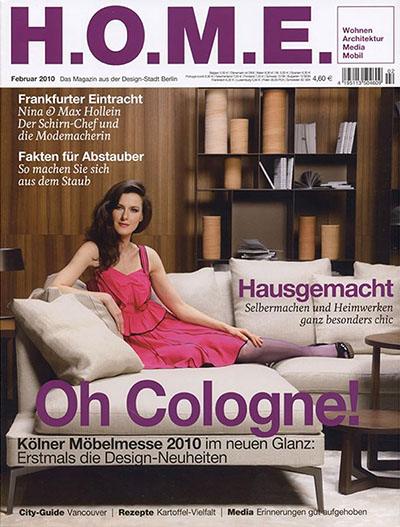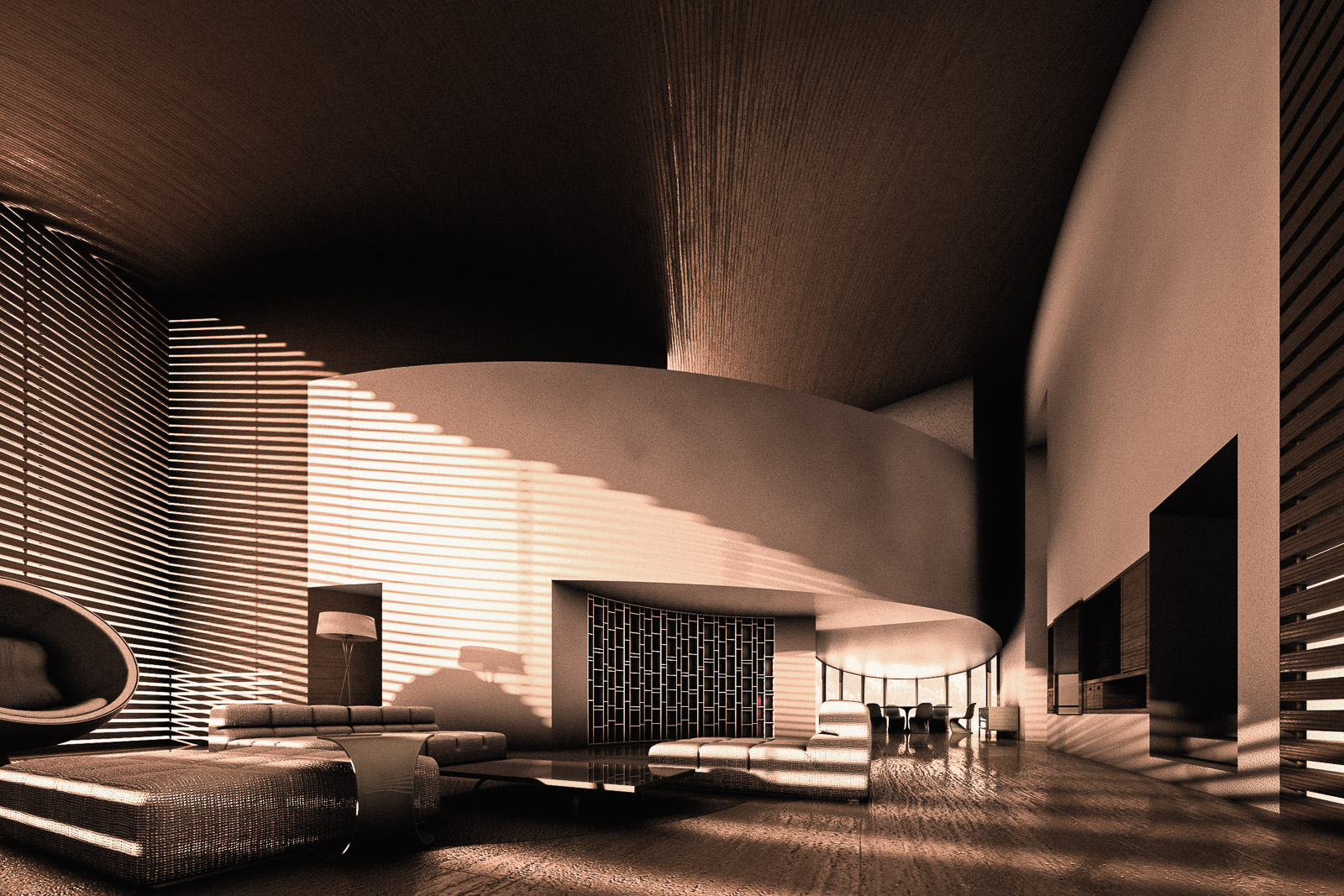
Review
Judith Jenner
Flamenco in Stone: The young Italian architect Antonino Cardillo built the House of Convexities near Barcelona, drawing inspiration from the passionate Spanish national dance.
Swirling skirts, intense rhythms, and clacking castanets. Traditional Andalusian Flamenco has inspired many artists: Federico García Lorca with his poetry, Pablo Picasso with his paintings and sculptures, and the young Italian architect Antonino Cardillo with a house. Situated near Barcelona, this house is surrounded by fields. “I did not want to bring the landscape inside with large glass windows to visually open the house”, says Cardillo. “Still, it had to be filled with light”. For Cardillo, light in architecture is akin to sound in music. “It gives the space a voice. Sometimes it makes it sing, but it is mostly unpredictable. The ultimate meaning of architecture to me is the interpretation of light.”
In the House of Convexities, he brought sunlight inside through louvered doors and windows with a brise-soleil sunshade, inspired by Mediterranean architecture which often conceals the interior at first glance. Externally, the house appears angular, its plan reminiscent of a boomerang. However, the interior surprises with a cathedral-like wooden vaulted ceiling and an elliptical mezzanine that spirals upwards like a broad tower. It lowers the ceiling height over the dining area of the large living space, visually connecting the upper and lower floors. Two staircases lead to the semi-open first floor with 130 square metres of space and two spacious bedrooms, each with its own access. The larger bedroom, with an integrated bathroom, resembles a deformed spiral. The smaller room, intended for guests, partners, or children, is more conventional in layout. “The rooms are not strictly divided by function and can be reassigned at any time”, explains Cardillo. “Instead, they follow a logic of space and form.”
Inside the house, he mainly used three materials: oak for the large vaulted ceiling, travertine limestone for the floors, and white plaster for the walls. He also contributed to the interior design, creating the built-in shelves in the elliptical tower. For the living room, he chose the cream-coloured Tufty-Time sofa by Patricia Urquiola for B&B Italia and the Ball Chair by Eero Aarnio, which complements the curved forms of the architecture. The dining room features a classic design ensemble: light green Verner Panton chairs around an oval Eero Saarinen table. “More important than individual pieces is the dialogue the furniture should have with the architecture”, says the architect.
Antonino Cardillo, 34, who has the appearance of a fashion model, has won many awards for young architects, and his works appear in architectural publications. His office has been located in Rome’s historic centre for five years. The historic surroundings influence his work. He believes that good modern designs are impossible without memory and a strong sense of history. “A major challenge for me would be to design a piece of modern architecture for this old town”, says the native Sicilian. “It would certainly look different from Richard Meier’s Ara Pacis. Rome deserves something more profound.”
Is it a coincidence that he built the House of Convexities in Spain? “The Spanish seem more open to modern architecture than the Italians at the moment, perhaps due to the cultural void created by 40 years of dictatorship. It still serves as a warning. I believe we are reliving this tragic situation in Italy today, albeit in a different form.”
Cardillo studied architecture at the University of Palermo. His professor, Antonietta Iolanda Lima, has had a significant influence on his work. As a student, he was passionate about Frank Lloyd Wright’s architecture. “I am fascinated by designs for private houses. In my opinion, one can judge an architect’s performance by their residential designs”. Thus, Frank Gehry’s works in Los Angeles from the 1980s, such as the Schnabel House, are among his favourite buildings.
He remains tight-lipped about the client of the House of Convexities, revealing only that he is a composer with a deep interest in Mediterranean music.
Music and cinema are the arts that have the strongest influence on Cardillo’s houses, as well as everything else that occupies him at the time of design: his travels, his relationships, his emotions. Hence, no design could be reproduced in a different place or time. Cardillo enjoys improvising on the piano and synthesiser himself, “but I cannot replay anything”, he says. In Melbourne, he designed a private house to the ambient house sounds of John Foxx. The first ideas for the House of Convexities came to him in Havana, a musically vibrant city. On the way back to Europe, he connected these thoughts with Flamenco, the Spanish national dance. “If architecture is music in stone, can its elements dance?” Cardillo poetically asks. Observing the interplay of light and shadow in the House of Convexities, one is convinced they can.

Antonino Cardillo, House of Convexities, Barcelona, 2008.